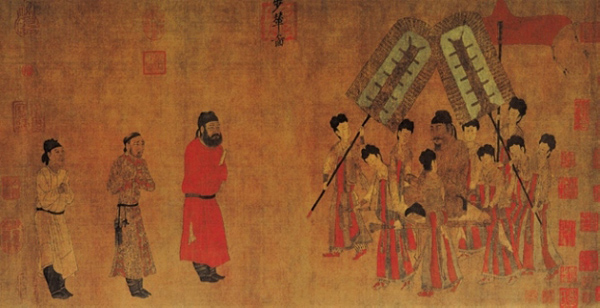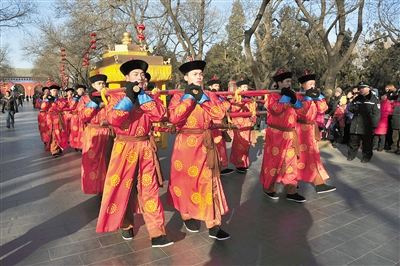 |
|
In the painting Bunian Tu, also called Emperor Taizong Receiving the Tibetan Envoy, Emperor Taizong of the Tang Dynasty sits on the imperial sedan called bu nian supported by several carriers. Others seeing to the emperor’s comfort hold large fans and an umbrella next to the sedan carriers. [Photo/Xinhua]
|
The sedan chair was a traditional vehicle in ancient China. The earliest sedan can be traced back to 4,000 years ago. In different ages, it had different names, like jian yu (shoulder carriage), mian jiao (sleeping sedan) and nuan jiao (warm sedan).
 |
|
Generally, the number of carriers and the material and size of the sedan can indicate the status of the user. Sixteen carriers in red clothes carry the imperial sedan, showcasing how an emperor in the Qing Dynasty worshiped heaven. [Photo/chinanews.com]
|
The sedans familiar to modern people originated from nuan jiao in the Ming and Qing dynasties. The sedan body is fixed in a wooden rectangular frame with two long log poles. The top and four sides of the seat are enclosed with curtains. One side can be rolled up and there is a small window on each side. A chair is placed inside the enclosed space. The ancient sedan can be divided into two types: guan jiao (official sedan) and min jiao (civilian sedan).
